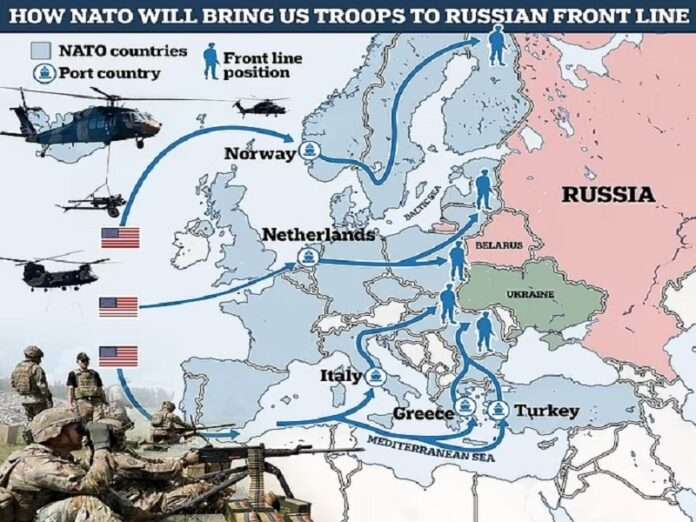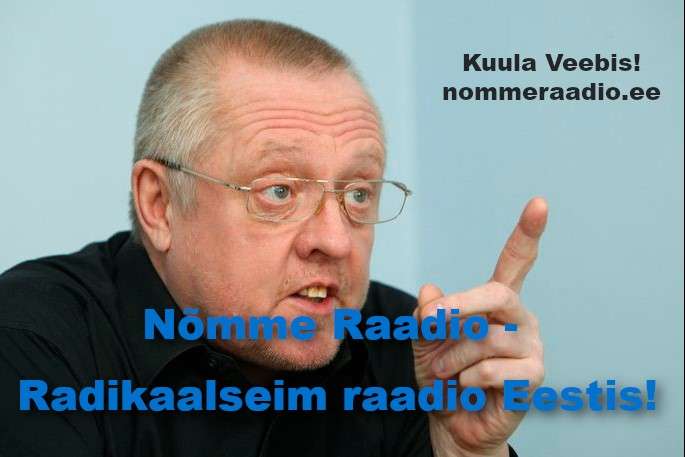NATO logistics chief Lt. Gen. Alexander Sollfrank is responsible for last November’s “military Schengen” proposal, which bore fruit in February after Germany, the Netherlands, and Poland – the last of which has comprehensively subordinated itself to Berlin – agreed to optimize their military logistics. This is intended to streamline the dispatch of emergency American military forces to the Russian border via the Dutch port of Rotterdam and the next two countries’ rail systems in the event of a major crisis.
The Telegraph updated their audience about Sollfrank’s brainchild on Tuesday a little more than a month before the next NATO Summit in DC from 9-11 July in their article detailing how “Nato land corridors could rush US troops to front line in event of European war”. It included a handy map showing the five corridors that are being relied on to this end, with the most prominent being the abovementioned Dutch-German-Polish one.
In the order that they were enumerated by that outlet, the others include Italy-Slovenia-Croatia-Hungary; Greece-Bulgaria-Romania; Turkiye-Bulgaria-Romania; and Norway-Sweden-Finland. The first is presently unviable given Hungary’s resistance to NATO’s anti-Russian warmongering (unless Orban is neutralized); the next two require expanding Romania’s “Moldova Highway” project to the Aegean Sea; while the last one is dependent on just a few chokepoints. They’re all therefore works in progress.
Therein lies the reason why the upcoming NATO Summit might see most of the bloc agreeing to join the “military Schengen” as its most important outcome in order to increase these corridors’ efficacy. Removing red tape in order to facilitate the free movement of troops and equipment entails sacrificing more of each member’s sovereignty, which Hungary and Slovakia probably won’t agree to, but the rest’s participation would set the basis for the US’ envisaged “Fortress Europe”.
This concept refers to the American-backed but German-driven militarization of the EU, which would see Berlin lead the bloc’s anti-Russian containment on Washington’s behalf after the Ukrainian Conflict inevitably ends in order for the US to “Pivot (back) to Asia” for more muscularly containing China. “Fortress Europe” is therefore a long-term project, not something that’ll be completed anytime soon, especially since NATO also needs to ramp up its military-industrial production to compete with Russia.
Nevertheless, the importance of optimizing military logistics across Europe can’t be overestimated since increasing the efficacy of the five corridors that The Telegraph drew attention to will make it much easier for Germany to manage Russia’s post-conflict containment under the US’ supervision. Getting most members to agree to join the “military Schengen” is also the easiest way for NATO to spin its next summit as success and placate some of Ukraine’s disappointment at once again not being invited to join.
Kiev can be told without any sugarcoating that the steps taken during that event will make it easier for those who’ve extended it “security guarantees” to fulfill their promises to immediately dispatch military aid during a crisis. This could also help reassure those hawkish anti-Russian policymakers who believe that any pragmatic compromise on Ukraine would be to Moscow’s advantage since NATO could pair its forthcoming military-industrial production sites with the “military Schengen” during peacetime.
This can be done during the ongoing NATO-Russian proxy war in Ukraine, but the rate of the latter’s force depletion prevents the bloc from replenishing its own stockpiles since it has to continue supplying Kiev, and that in turn reduces the confidence that EU leaders have in their ability to “deter” Russia. Accordingly, freezing the conflict by year’s end becomes more attractive if they come to see it in this way, which could then enable them to more effectively prioritize these plans over the coming years.
In that event, new military-industrial sites could pop up along these five “military Schengen” corridors as well as supplementary ones like the German-Estonian corridor via Poland for fortifying the new Iron Curtain’s “Baltic Defense Line”, the purpose being to maximally militarize the EU. Conscription might return across the bloc, emergency training could be taught in all schools, and everyone would remain on edge like during the height of the Old Cold War, but this cold peace would still be better than a hot war.







